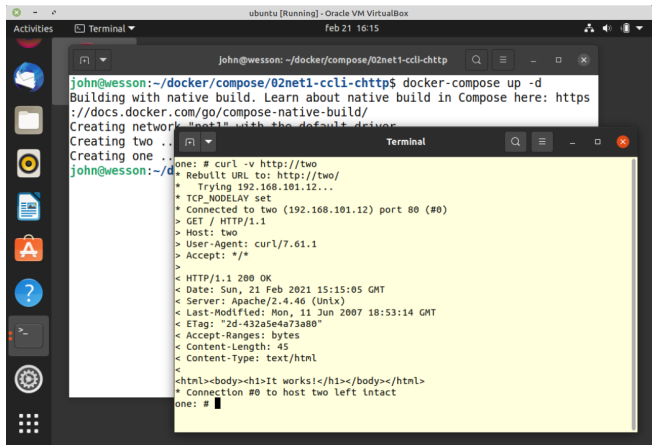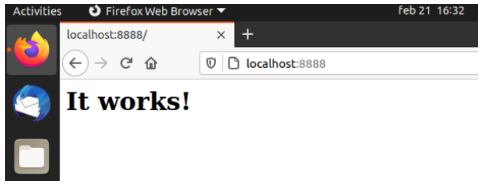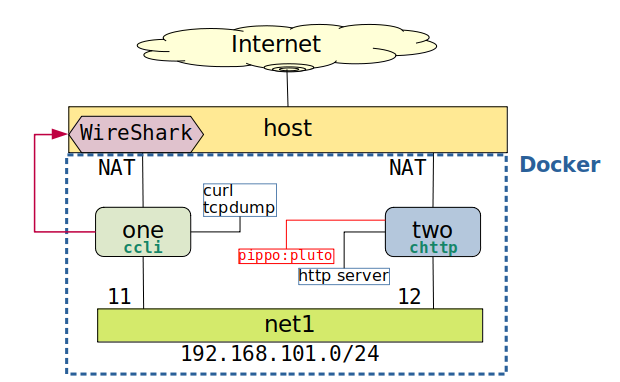Esercizio 2: comunicazione con host
02net1-ccli-chttp
Una rete, client e server HTTP.
Collegamento a server HTTP dal browser dello host.

Scaffolding
Creare la directory di progetto:
mkdir 02net1-ccli-chttp
cd 02net1-ccli-chttp
Preparare lo scaffolding. Il risultato è:
.
├── ccli
│ └── Dockerfile
├── chttp
└── docker-compose.yml
Il file ccli/Dockerfile è lo stesso dell’esercizio precedente°
cp ../01net1-ccli-cssh/ccli/Dockerfile ccli
Il server HTTP userà un’immagine dal Docker Hub, non vi sarà bisogno di costruirne una.
docker-compose.yml
vim docker-compose.yml
version: '3.6'
services:
one:
build: ccli
image: ccli
container_name: one
hostname: one
cap_add:
- ALL
networks:
net1:
ipv4_address: 192.168.101.11
two:
image: httpd:2.4-alpine
container_name: two
hostname: two
cap_add:
- ALL
networks:
net1:
ipv4_address: 192.168.101.12
networks:
net1:
name: net1
ipam:
driver: default
config:
- subnet: 192.168.101.0/24
Lancio

Accesso da Browser esterno
Occorre compiere un port mapping.
Modificare docker-compose.yml per supportarlo:
...
two:
image: httpd:2.4-alpine
container_name: two
hostname: two
cap_add:
- ALL
ports:
- 8888:80
networks:
net1:
ipv4_address: 192.168.101.12
...
Esecuzione
Partenza del progetto:
docker-compose up -d
Aprire un browser sulla macchina virtuale.
Collegarsi a http://localhost:8888 e verificare.

Esercizio 2A
Una rete, client e server HTTP.
Da tcpdump di un container a Wireshark sullo host.

Cooperazione tra Host e Container
Installare Wireshark sulla macchina host:
sudo apt install wireshark-qt
Richiede tempo.
Far partire il progetto:
docker-compose up -d
Dalla macchina host:
Lanciare Wireshark che si collega al tcpdump del container one
sudo wireshark -i <(docker exec one tcpdump -i eth0)
Qualsiasi interfaccia vethxxx va bene.
Su one:
Aprire un terminale.
Collegarsi al server HTTP con curl:
curl -v http://two
Monitorare il traffico su Wireshark.